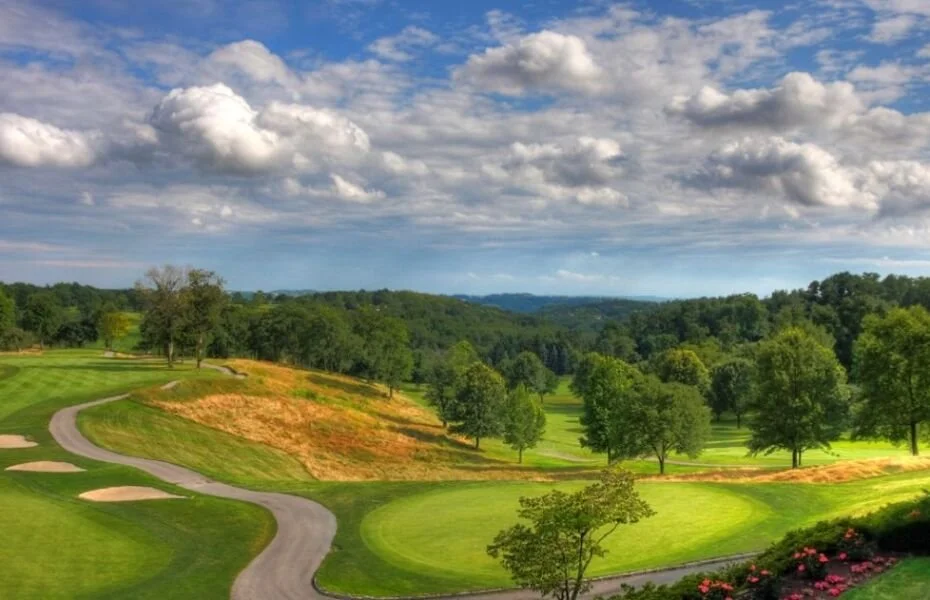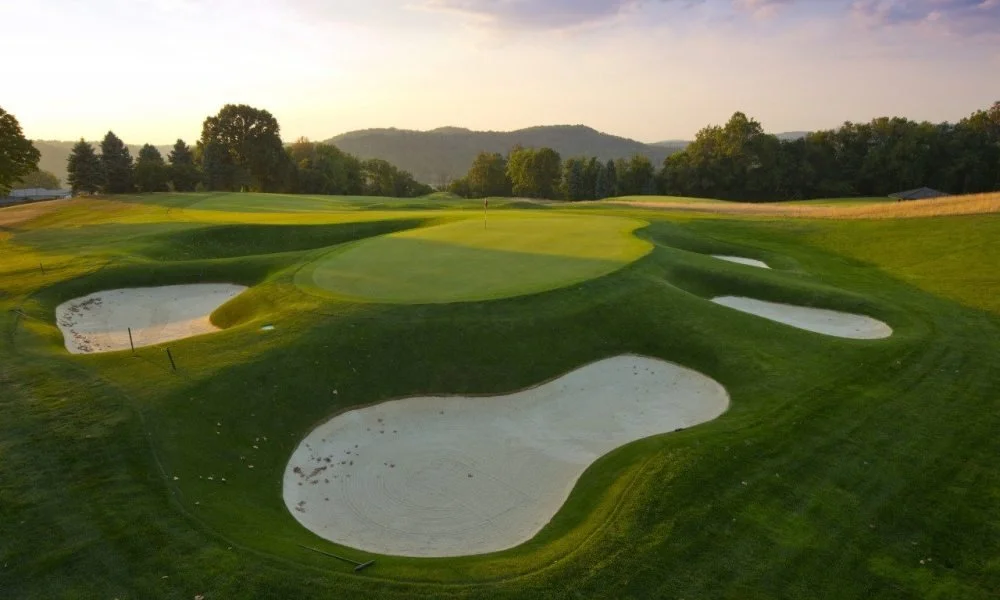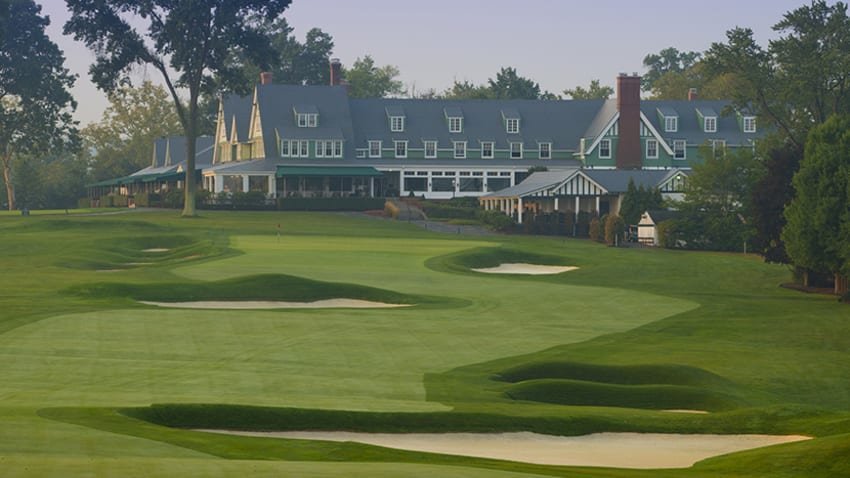My Experience as a Caddie and Oakmont Country Club
My Experience and What it Taught Me
Throughout my experience as a caddie (8 years), I was given amazing opportunities to not only work for myself at a young age, which contributed to my entrepreneurial drive, but I also had the opportunity to caddie and play at one of the top courses in the world, Oakmont Country Club.
These experiences taught me many life lessons such as: networking, ownership, entrepreneurism, communication, golf, strategizing, and attention to detail to name a few. Beyond that it also kept me in great physical shape and taught me a hard day’s work is well worth the reward. It shaped me into who I am as a person today.
So, let’s take a deep dive into my career as a caddie and discuss the events that brought me here.
The Start of it all
I learned about caddying and the potential of becoming a caddie in my computer class in middle school, when I was supposed to be doing something with Microsoft Word. I was curious about doing it as a job to make some money since I was young and couldn’t get a job anywhere else at the time. Caddying was the solution that I found at a course named Edgewood Country Club… Little did I know that it would shape me into being the man that I am today and teach me so much about life at a young age.
Edgewood Country Club:
At the age of 14, I began my caddying career at a course just outside of Pittsburgh, named Edgewood Country Club. Edgewood is a member’s only, Donald Ross designed course situated in the rolling hills of Churchill, Pennsylvania. Edgewood features 6558 yards from the blue tees at a par 72, and was quite the loop for a young caddie, with large elevation changes, and steep inclines, I had my work cut out for me.
Edgewood Country Club Logo (www.eccgolf.com)
Edgewood Country Club (golfpass.com)
While caddying at Edgewood, I experienced several amazing events before my eyes, including my first hole in one on the #14, 140-yard par 3, during the member-guest invitational. An Eagle on the #15, 343-yard par 4, that I stuck with a magnificent shot from 127-yards, on caddie play Mondays. I still have that ball to this day, a memento of days passed.
I also had the pleasure to play Edgewood in High School as part of the WPIAL qualifiers at 15. While I did not make the cut, missing the cut-off by 2 strokes (82, 10 over par, cutoff being 80). I will always remember that day.
But learning to caddie at Edgewood was so much more than that. It provided me the opportunity to pay for a school trip to Europe and the UK, not once, but twice. The pride that I felt to be able to make that trip, with my own money, that I worked for at such a young age was an experience that I hold highly in my heart.
Transitioning to Oakmont
Oakmont Country Club:
While I had a great time at Edgewood, I was called up to the big leagues at “The OCC” at 16-17. Oakmont Country Club, host of 22 national championships (“12 majors, an unprecedented 9 U.S. Opens and 3 PGA Championships, 5 U.S. Amateurs, 3 Intercollegiate Championships, and the 2 U.S. Women’s Opens” – oakmont-countryclub.org).
Transitioning to this (the H.C. Fownes 1903 par 71, 7,255 yards Green Tees, 6,436-Blues, 6,221-Whites, 5,629-Reds, with a rating of 77.5 and slope of 147, and just under 200 bunkers staked for any offline shot) beast of a course that featured some of the greatest landmark moments was something that I could not pass up on. Such moments include:
· 1919 U.S. Amateur: It was one of the game’s “majors” at the time, and Oakmont son Davy Herron won it, beating the young Georgia phenomenon Bobby Jones, 17, by a decisive 5 and 4 in the championship match. This was the first of only two times Jones would lose in the final. He would win five U.S. Amateurs.
· 1925 U.S. Amateur: Jones made this one the second of his five U.S. Amateur championships, crushing his good friend and fellow Georgian Watts Gunn, 8 and 7, fueling his skyrocketing reputation.
· 1927 U.S. Open: The first of a record nine U.S. Open Championships to be contested at Oakmont. The “Silver Scot,” Tommy Armour, shot a total score of 301 in regulation to tie Harry Cooper. In the subsequent 18-hole playoff, Armour defeated Cooper to earn the first of his three career major championships.
· 1935 U.S. Open: Little-known Sam Parks Jr., a club professional from Pittsburgh, became golf’s most famous dark horse winner when he plucked this Open out of the fingers of the best in the game. Parks turned course knowledge into a gold mine. He had practiced religiously at Oakmont before the Open.
· 1953 U.S. Open: Ben Hogan had one of the greatest seasons ever in golf. He entered only six events, and won five of them, and three of these were majors – the Masters, the U.S. Open and the British Open, three legs of the Grand Slam. He couldn’t play in the fourth leg of the slam, the PGA Championship, and the slam has never been won.
· 1962 U.S. Open: In a historic victory, young Jack Nicklaus, 22, scored his first win as a pro, beating the iconic Arnold Palmer, the world’s greatest golfer, in a grind that ended in an 18-hole playoff. Palmer was done in by Oakmont’s fierce greens. He three-putted 11 times to only once by Nicklaus.
· Early 1960s: The tree-planting beautification program began.
· 1973 U.S. Open: History was made again at Oakmont. Johnny Miller won by shooting an 8-under-par 63 in the final round, a record not only for a U.S. Open but for all four majors.
· Early 1990s: The tree-cutting restoration program began. When it was completed, some 5,000 trees had been removed, restoring Oakmont to its original condition.
· 1992 U.S. Women’s Open: The best women golfers converged on Oakmont for the first time to play for the National Championship. Patty Sheehan overcame a two-shot deficit on the final two holes to tie Juli Inkster and force a playoff. Despite only hitting nine greens in regulation during the playoff, Sheehan fended off her former college roommate to earn her first U.S. Women’s Open and her third of six career majors.
· 1994 U.S. Open: Els needed par on the last to hold off Roberts and Montgomerie, but he hit his drive into the rough and made bogey from there, forcing a three-way playoff. After halving the first extra hole, they headed to the 11th where Roberts found a greenside bunker on his approach while Els safely hit the green. After Roberts' par putt lipped out, Els two-putted for par and the championship.
· 2007 U.S. Open: This was the first championship on an Oakmont restored to its original state after the removal of some 5,000 trees. And Argentina’s Angel Cabrera joined Sam Parks Jr. (1935) and Orville Moody (1969) as obscure players who surfaced to win the U.S. Open.
· 2010 U.S. Women’s Open: The second time the U.S. Women’s Open would be contested at Oakmont saw the “Pink Panther”, Paula Creamer, earn her first career major championship. The course played incredibly difficult, as Creamer was the only player under par for the week.
· 2016 U.S. Open: Nearly four inches of rain Thursday softened the golf course, but by Sunday, Oakmont had its teeth back. The course only yielded four scores under par for the week. Dustin Johnson took advantage of the wet conditions to bomb booming drives past the majority of the field and earn his first career major championship.
Credit: https://www.oakmont-countryclub.org/Default.aspx%3Fp%3DDynamicModule%26pageid%3D346458%26vnf%3D1
Looping at Oakmont Country Club was like nothing I had ever done before. Being a massive fan of golf and understanding the history of the course, I could feel it’s deep historical roots climbing through the 4-8 inch rough whenever a miss-hit sent me into it, towering over me while raking the massive bunker known as “Big Mouth” on the infamous Par 4 #17 or the church pews on #3 and #4, or walking up to the clubhouse with a beautiful view from the #18 Tees.
The Church Pews on #3 and #4(Golf.com)
The 18th Hole Oakmont CC (pgatour.com/Fred Vuich/Getty Images)
However, caddying at this course was more than just the history, it was an art. To successfully play a hand and help your golfer, members and guests alike, you had to be on you’re A-game. With it’s huge undulations, extremely fast greens, and 175 bunkers (up for debate as all the caddies knew there to be 211), a mistake in your calculations could cost your golfer big time (ownership and decision making).
The best caddies at Oakmont know the course like the back of their hands and can account for the slope of the green, distance, wind, and make assessments of their golfer’s strengths and weaknesses to help them through the round (attention to detail and strategizing).
Throughout time, caddying at this degree certainly has multiple effects on you as a person. It makes you extremely concise in your wording and an effective communicator, an excellent networker, and gives you a leg up on competition through networking with high-level professionals.
What’s better than that?
Caddying can also make an extreme impact on your game too. As a caddie and seeing so many diverse playing styles and trying to help them get that 1.8-inch dimpled sphere into a 4.25” hole has a monumental impact on your game as well.
During my career as a caddie, given the opportunity to play courses like this for free every Monday, I was able to shave tons of strokes off my game. Not only because I learned new techniques and playing styles, but because it reinforced my own playing style, techniques, does and don’ts, and most importantly: the ability to read world-class greens.
While your journey may not be like mine…
While you might not have the opportunity to caddie at a world-class course, such as Oakmont Country Club, due to location, etc… I know that caddying will have a profound effect on your life, like it did on mine.
Whether you are caddying for the enjoyment of the game, to be your own boss, or any other reason. I know that it will have an impact on your life, which is the principle behind what we are doing here at Caddy Time. We are bringing caddies to your course or getting you caddie jobs no matter where you are located.
We want to help you succeed in your endeavors, as a caddie, and bring a new element of enjoyment to your round, as a golfer.




